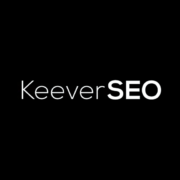Unlocking the Future of Marketing: AI-Driven SEO Tools and Their ROI Potential in 2025 – AInvest
News/
Articles/
Articles Details
Tracking the pulse of global finance, one headline at a time.
The AI revolution is reshaping marketing’s DNA. By 2025, the AI-powered SEO and content optimization tools sector has surged to $67 billion, fueled by a 22% compound annual growth rate (CAGR) since 2020. This isn’t just incremental progress—it’s a seismic shift. Businesses leveraging platforms like Semrush and ChatGPT are now achieving 30–50% ROI jumps, outpacing competitors who cling to outdated strategies. For investors, this is a call to action. 
The rise of AI in marketing isn’t about cost-cutting—it’s about supercharging relevance. Answer Engine Optimization (AEO), voice search dominance (now 50% of mobile queries), and the need for hyper-personalized content have created a “winner-takes-most” environment. Tools like Semrush’s E-E-AAT (Enhanced Expertise, Authoritativeness, Trustworthiness) and ChatGPT’s conversational AI are no longer optional: they’re the difference between thriving and fading in search rankings.
Consider the 31% organic traffic boost reported by businesses using AI SEO tools. For context, that’s equivalent to a company suddenly reaching 30% more customers without spending a dime on paid ads. Pair that with 15.9% conversion rates—9x faster than non-AI traffic—and the ROI becomes undeniable.
Semrush’s Content Toolkit and Copilot are game-changers. A SaaS company using these tools saw 22% higher conversions for commercial keywords, with pre-qualified traffic being 4.4x more valuable than traditional sources. The $60/month price tag isn’t just for tools—it’s an investment in replacing entire workflows.
Semrush’s 2025 revenue growth mirrors its market dominance. Investors should note its Copilot feature, which consolidates data from tools like Site Audit and Keyword Gap, saving teams hours of manual work. For enterprises, this translates to cost savings and faster execution—a rare combination in a high-cost tech landscape.
OpenAI’s ChatGPT isn’t just a chatbot—it’s a $20/month content factory. A travel agency cut costs by 40% while boosting engagement by 15%, using ChatGPT to generate localized content for 20+ markets. The 68% time savings on keyword clustering and content drafting alone justify its adoption.
Yet, ChatGPT’s true power lies in its hybrid model. While “hallucinations” (AI-generated errors) remain a risk, 68% of top-performing sites now use human-AI teams. This synergy—AI for speed, humans for accuracy—is the gold standard, not a temporary fix.
The 300% traffic surge of a niche “removable prosthodontics” guide, driven by ChatGPT’s citation in voice searches, underscores the need for AEO tools like Profound and Semrush’s E-E-AAT. These platforms help brands dominate conversational queries, where 50% of mobile searches now originate.
By 2030, the voice search market is projected to hit $34 billion, making AEO optimization a must-have. For investors, this means backing tools that align with Google’s shift toward “useful, high-value content” and the rise of AI-driven search algorithms.
Critics cite AI’s “hallucination” flaws and regulatory risks. Yet, 78% of organizations already use AI—and those using hybrid teams are 3x more likely to outperform peers. Tools like Copyleaks (for plagiarism detection) and Grammarly (for tone correction) mitigate these risks at minimal cost.
ETFs: The Global X Robotics & AI ETF (BOTZ) offers diversified exposure to AI innovators like NVIDIA and Palantir.
Emerging Niches:
The $67 billion AI SEO market is only the beginning. Early adopters are already seeing ROI jumps of 30–50%, but valuations will rise as AI becomes mainstream. Investors should prioritize tool providers with scalable AI integration (like Semrush) and platforms with enterprise-grade security (e.g., Microsoft’s Azure).
For 2025, the playbook is clear:
– Buy the tools that dominate workflows (Copilot, ChatGPT).
– Short legacy SEO firms unable to integrate AI.
– Hedge with ETFs to capture broader AI trends.
The future belongs to those who let AI do the heavy lifting—and humans do the strategy. Don’t miss the train.
No comments yet










